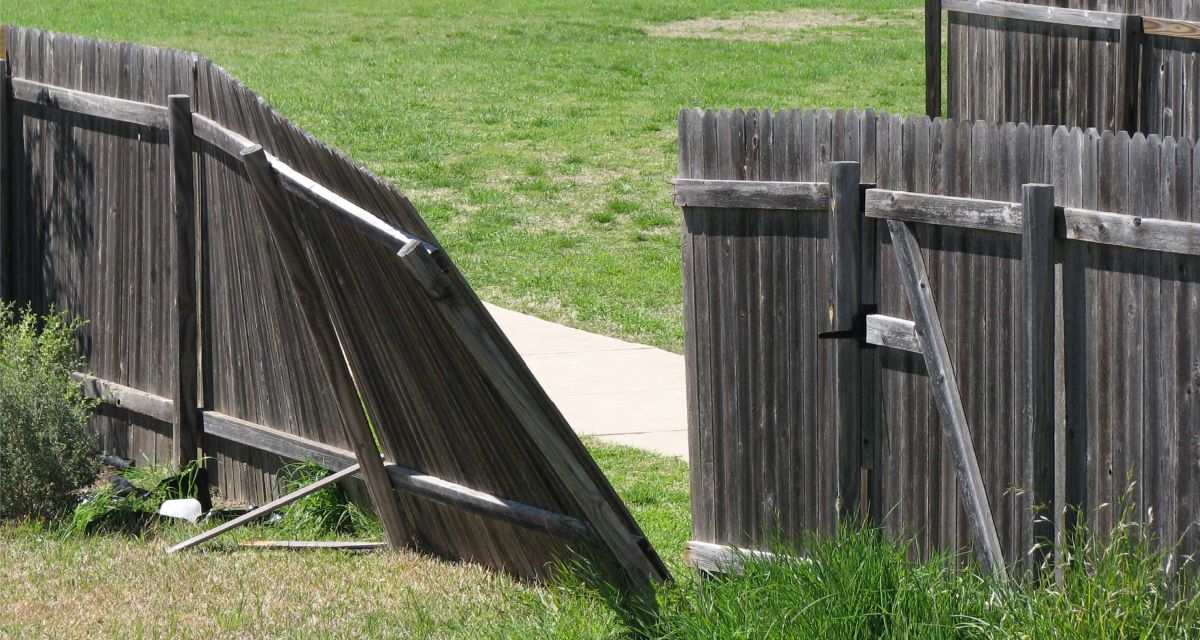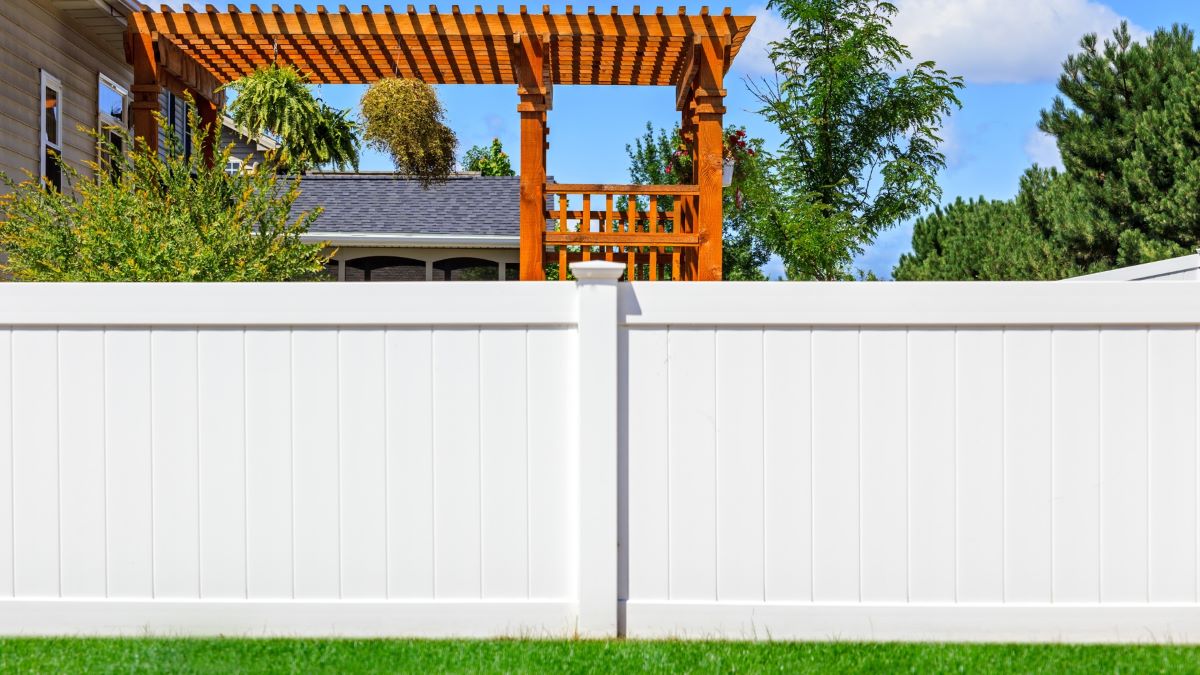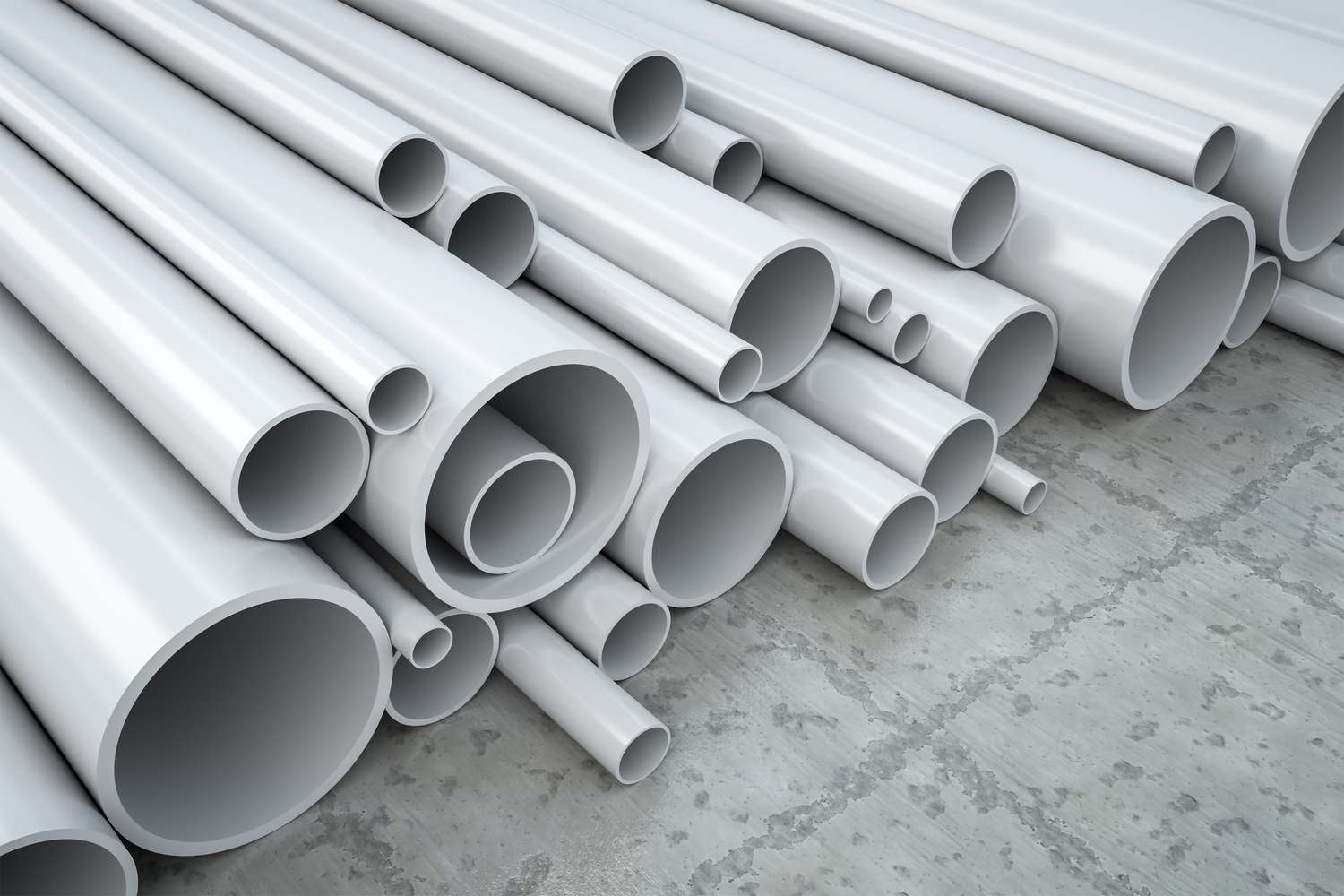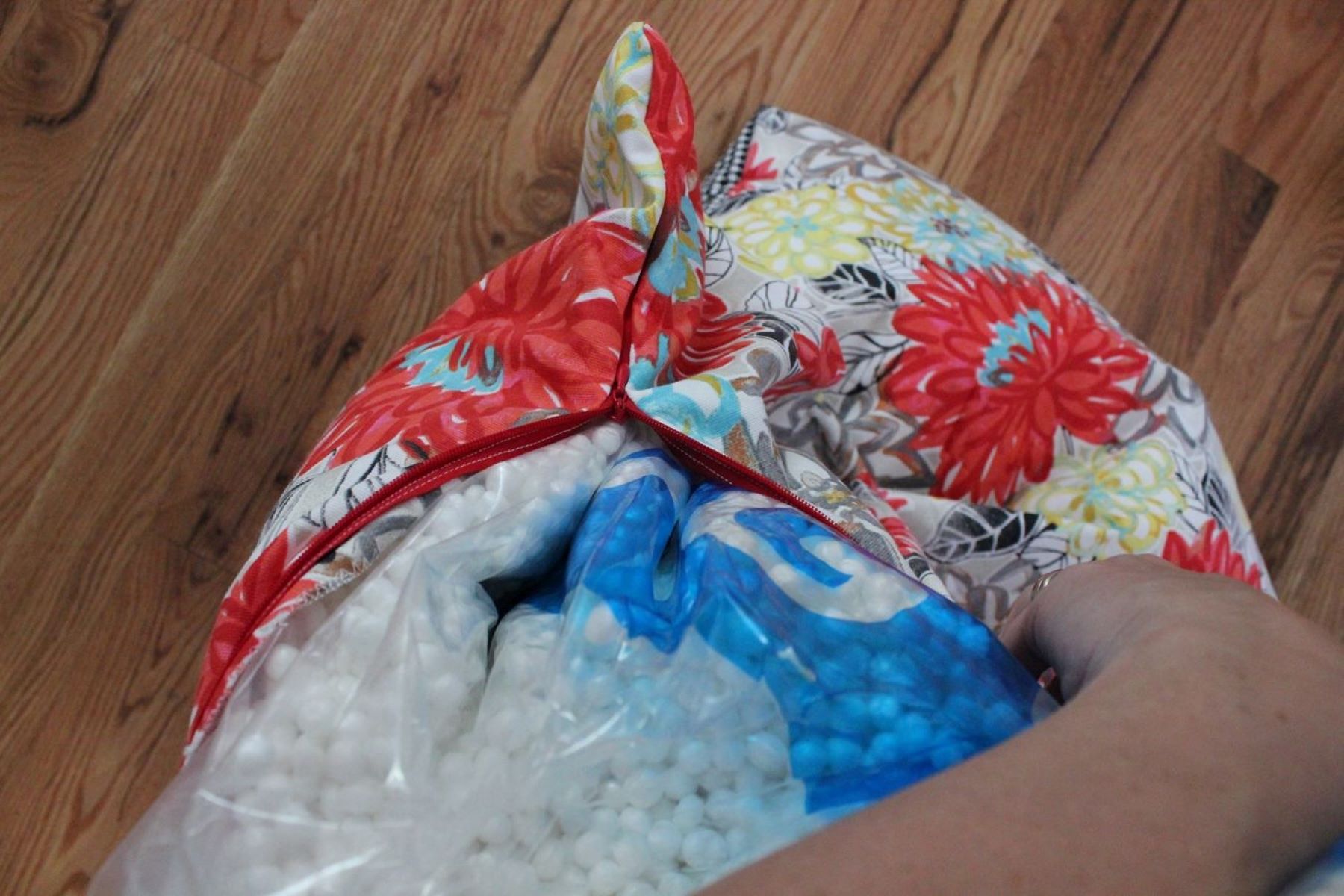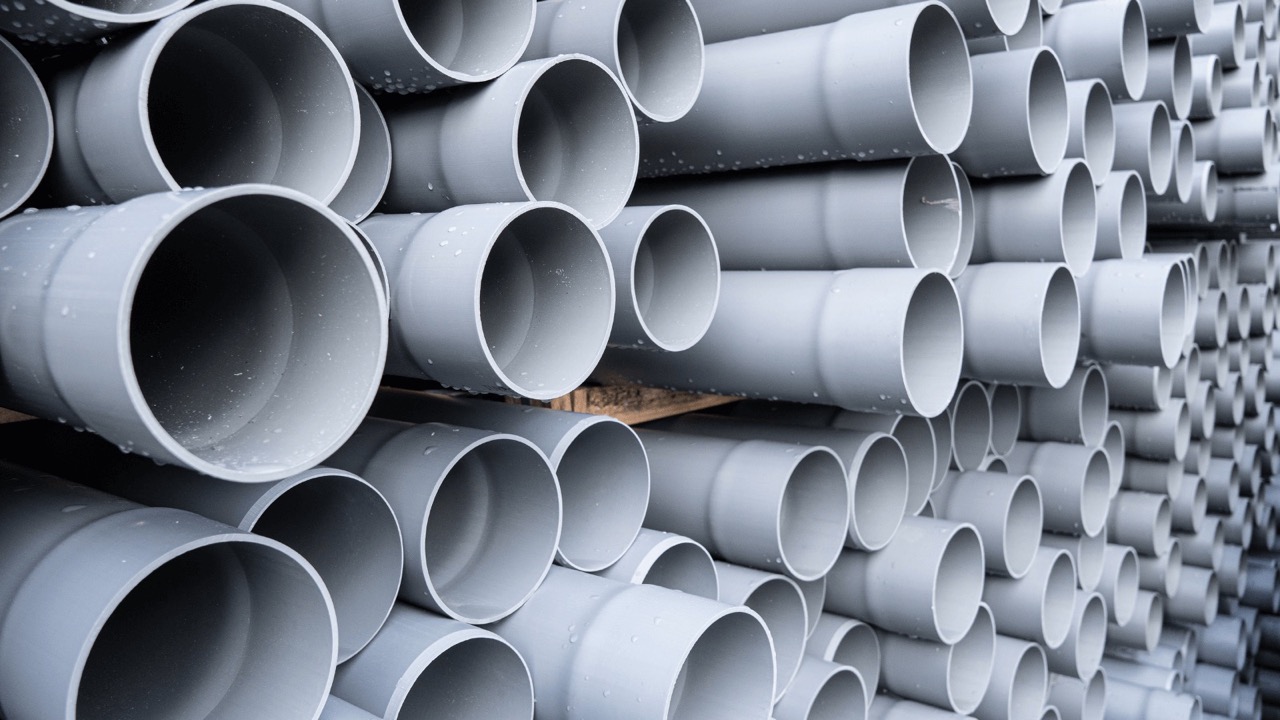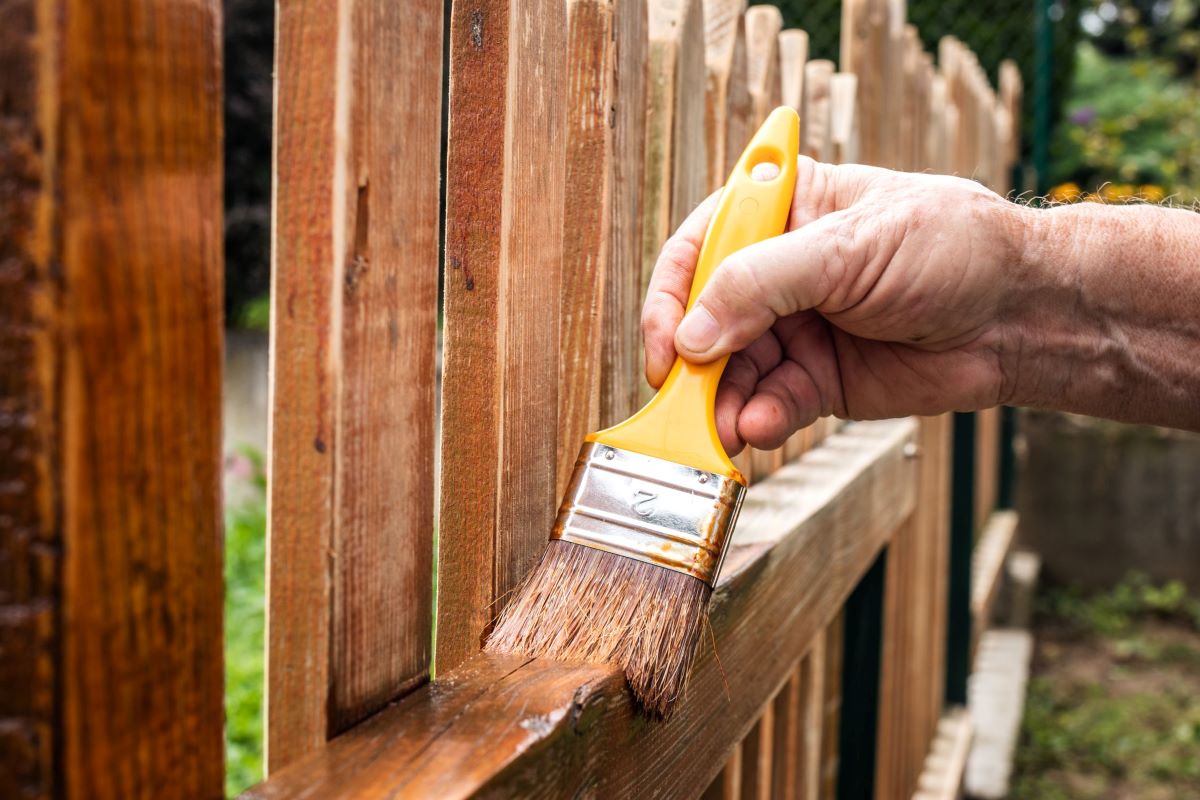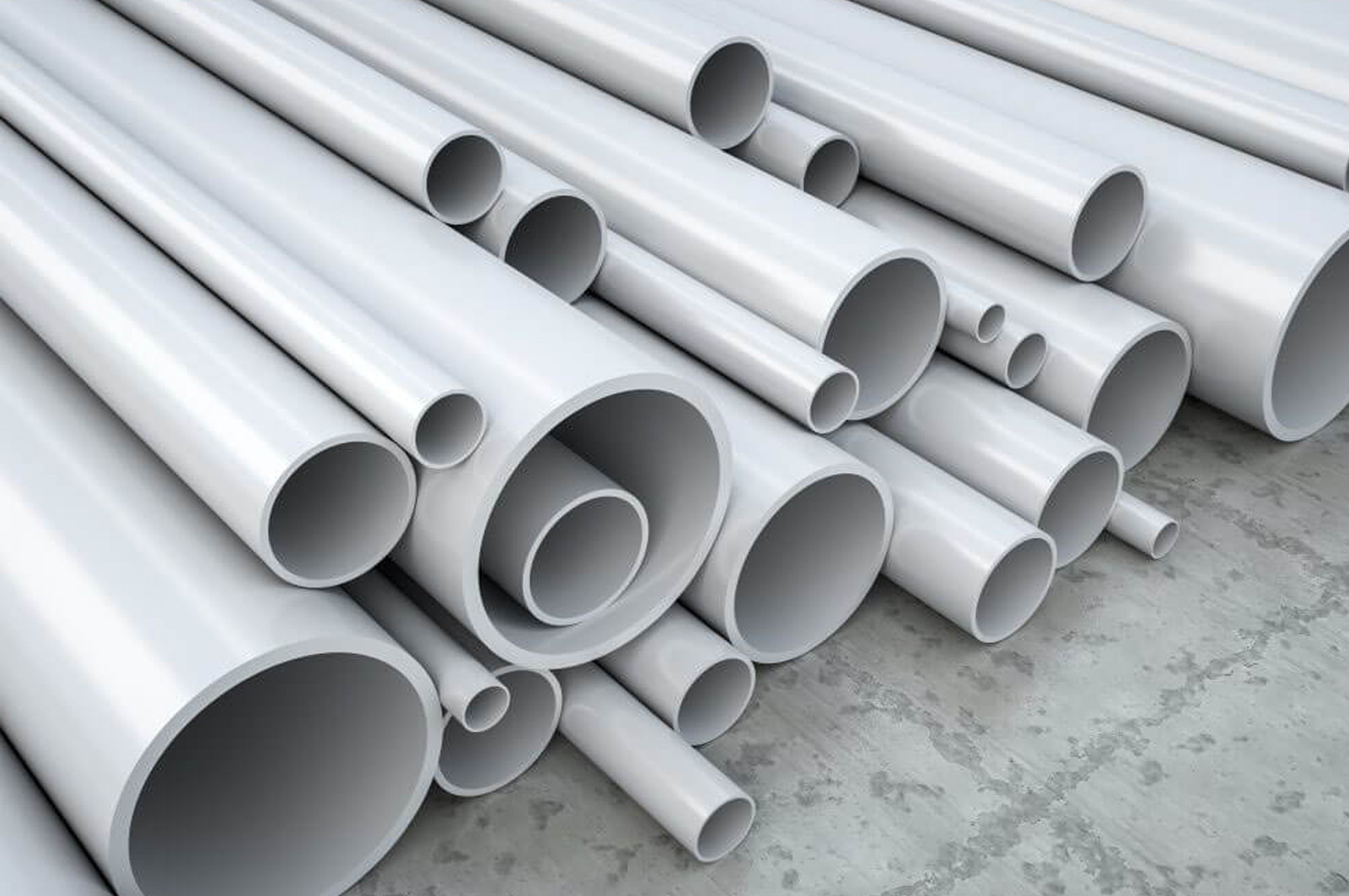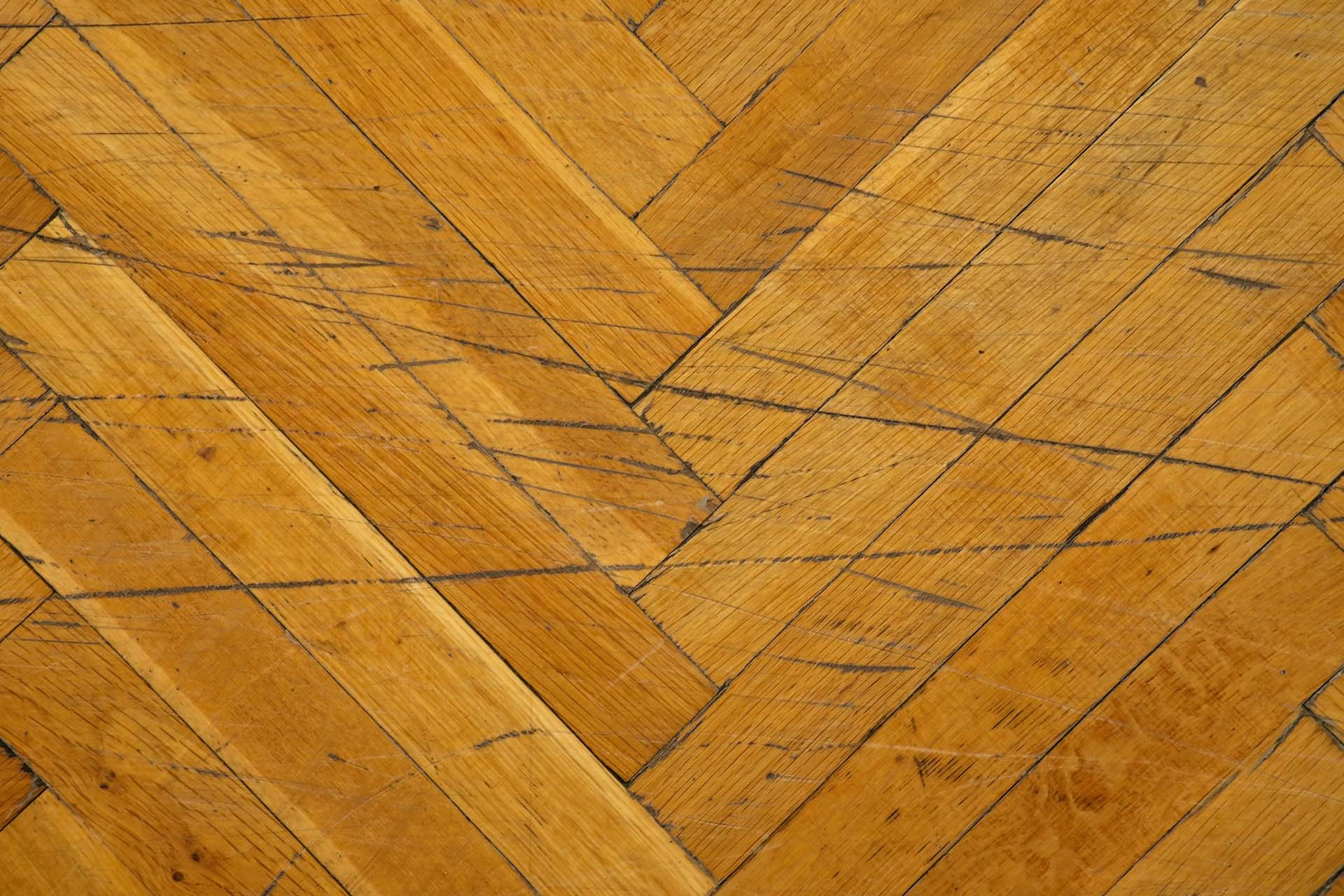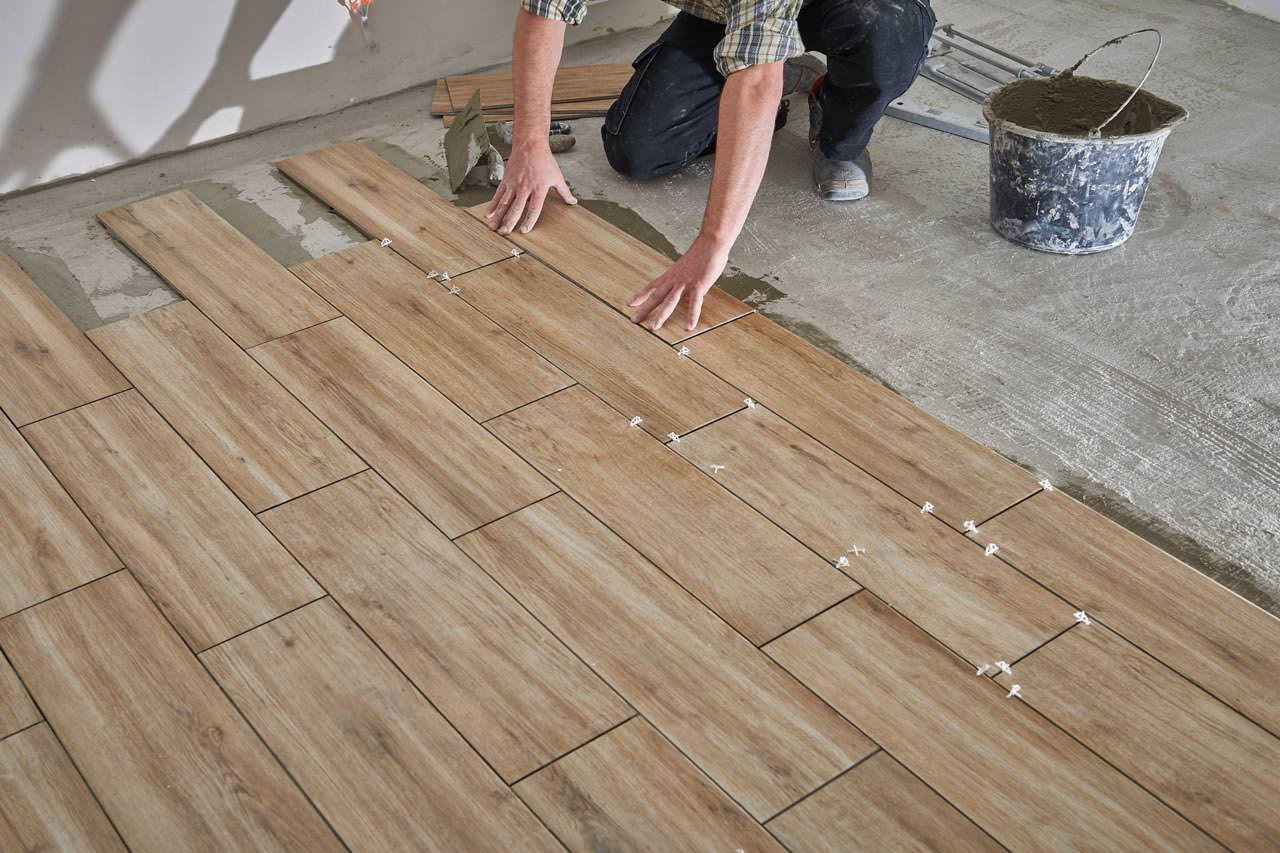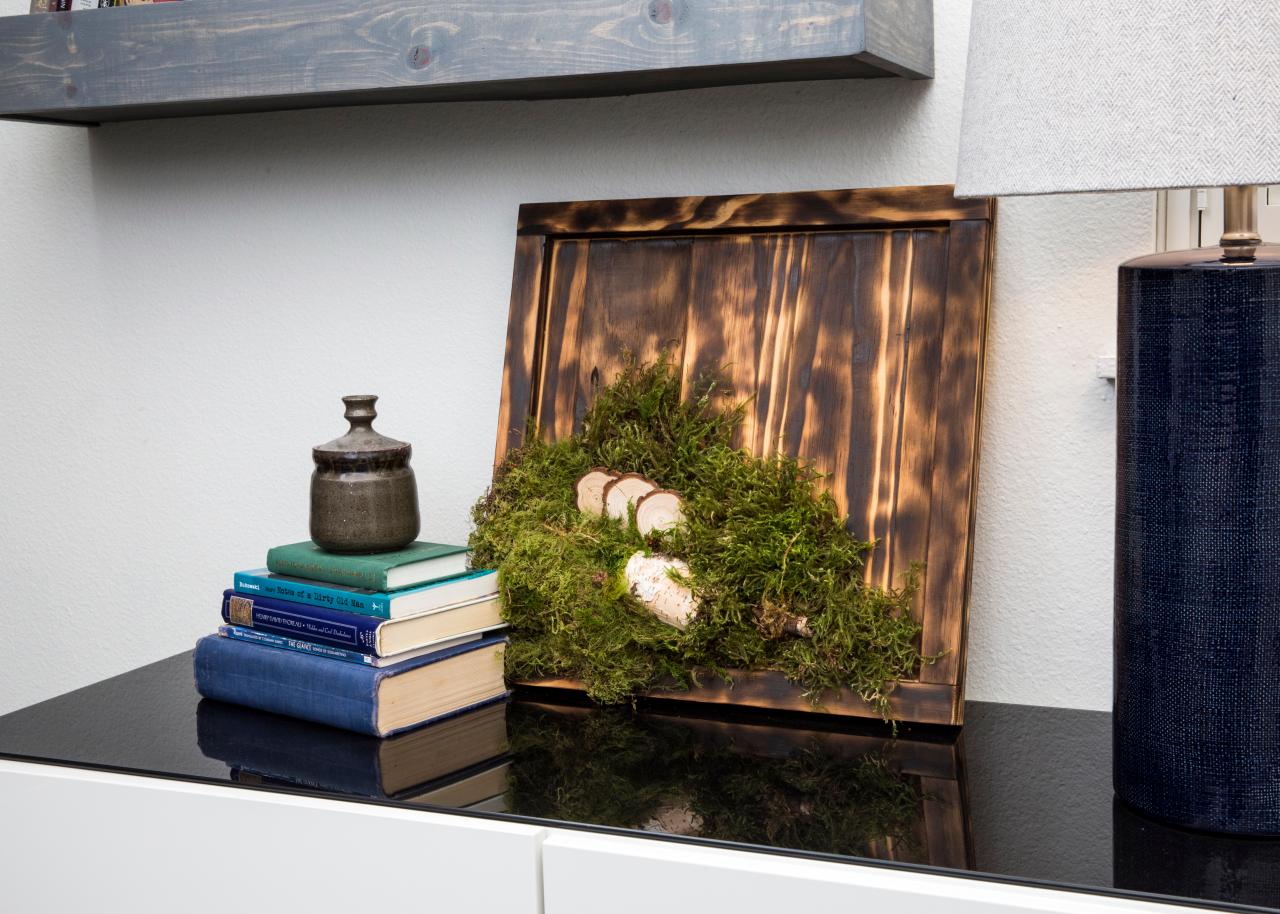Home>Home Maintenance>What Is PVC Filler For Wood Rot In Home Repair
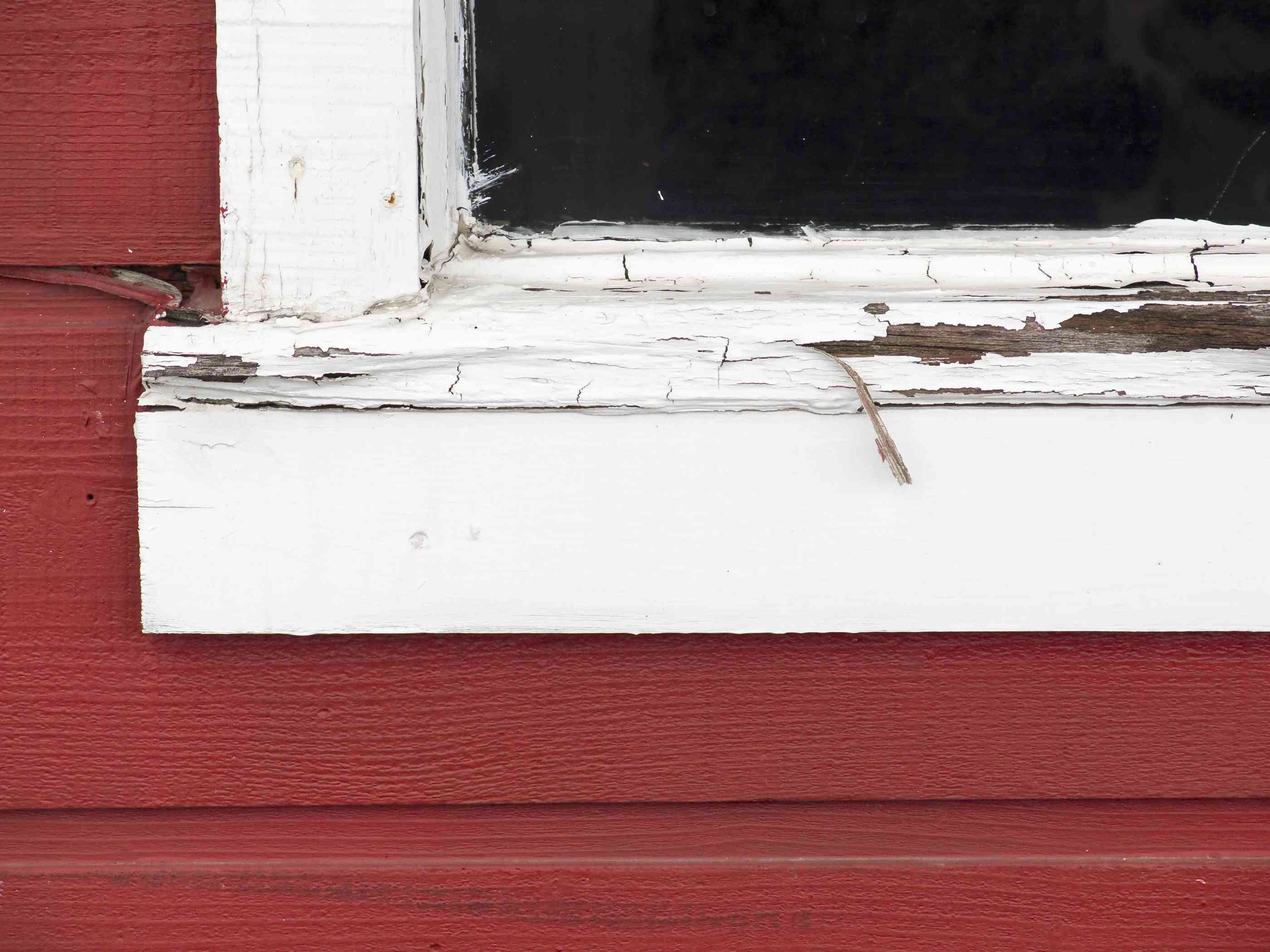

Home Maintenance
What Is PVC Filler For Wood Rot In Home Repair
Modified: March 6, 2024
Learn about PVC filler for wood rot in home repair and how it can help you with your home maintenance needs.
(Many of the links in this article redirect to a specific reviewed product. Your purchase of these products through affiliate links helps to generate commission for Storables.com, at no extra cost. Learn more)
Introduction
Welcome to the world of home maintenance! As a homeowner, you know that taking care of your property is essential to ensure its longevity and beauty. One common issue that often arises is wood rot. It can be caused by a variety of factors, such as moisture, pests, or simply the natural aging process of wood.
Fortunately, there are effective solutions available to repair and restore wood rot. One such solution is using PVC filler. In this article, we will explore what PVC filler is, how it can be used to repair wood rot, and the benefits it offers.
Whether you’re a DIY enthusiast or hiring a professional, understanding the basics of PVC filler for wood rot repair will empower you to make informed decisions and maintain the structural integrity of your home.
So, let’s dive into the world of PVC filler and discover the wonders it can do for your wood rot repair projects!
Key Takeaways:
- PVC filler is a durable and versatile material used to repair wood rot. It resists moisture, can be molded to fit any shape, and comes in various colors to match wood finishes.
- Proper application of PVC filler involves surface preparation, layering, smoothing, and drying. Following safety precautions and choosing the right type of filler are essential for successful wood rot repair.
Read more: How To Replace Rotted Wood Siding
What is PVC Filler?
PVC filler, also known as PVC wood filler or plastic wood filler, is a versatile and durable material used in home repairs to fix wood rot and damage. It is made from a combination of PVC resin, wood fibers, and other additives, resulting in a product that closely mimics the properties of wood.
The main purpose of PVC filler is to fill in gaps, cracks, and holes in wood caused by rot or other forms of damage. It can be used on various types of wood, including exterior trim, siding, windows, doors, and decks.
PVC filler offers several advantages over traditional wood fillers. Firstly, it is highly resistant to moisture, which is a major cause of wood rot. This makes it an ideal choice for outdoor applications where exposure to rain and humidity is common. Additionally, PVC filler does not shrink or crack over time, providing a long-lasting and durable repair solution.
Another benefit of PVC filler is its ability to be molded and shaped. Unlike natural wood, PVC filler can be easily manipulated to fit into any crevice or contour. This makes it perfect for repairing intricate woodwork or detailed surfaces.
PVC filler is available in a range of colors to match different wood finishes, making it almost indistinguishable from the surrounding wood once applied and painted. This ensures a seamless and aesthetically pleasing repair that blends seamlessly with the existing woodwork.
Overall, PVC filler is a reliable and effective material for repairing wood rot and damage. It offers durability, moisture resistance, and versatility, making it a popular choice for both DIY enthusiasts and professionals in the field of home maintenance and repair.
Understanding Wood Rot in Home Repair
Wood rot is a common issue that homeowners face, especially in areas with high moisture levels. It occurs when wood is exposed to prolonged moisture, which provides an ideal environment for fungi to grow and thrive. These fungi feed on the wood, causing it to decay and deteriorate over time.
There are two main types of wood rot: brown rot and white rot. Brown rot is more common and typically affects softwood, such as pine or spruce. It causes the wood to darken and become dry and brittle, often resulting in a blocky or cubical pattern of decay. On the other hand, white rot primarily affects hardwoods and leads to a spongy and stringy decay, causing the wood to lose its strength and structural integrity.
The presence of wood rot can have serious implications for your home’s structural stability and aesthetic appeal. If left untreated, it can spread to other areas of the wood, compromising the integrity of the entire structure. Additionally, wood rot can attract pests, such as termites, which further worsens the damage.
Identifying wood rot is crucial for effective repair and prevention. Signs of wood rot include a musty odor, soft and spongy wood, discoloration, peeling paint, and the presence of fungus or mold. Regular inspections of your home’s exterior and interior wood surfaces can help detect wood rot at its early stages, allowing for timely repairs and intervention.
When it comes to repairing wood rot, using PVC filler can be an excellent solution. The PVC filler fills in the damaged areas, restoring the wood’s integrity, and preventing further decay. By understanding the nature of wood rot and addressing it promptly, you can protect your investment and maintain the beauty and value of your home.
Benefits of Using PVC Filler for Wood Rot
Using PVC filler for wood rot repair offers several significant benefits. Whether you’re a DIY enthusiast or hiring a professional, here are some advantages of using PVC filler:
- Durability: PVC filler is highly durable and resistant to rot, moisture, and pests. Unlike traditional wood fillers, PVC filler does not shrink, crack, or deteriorate over time. It provides a long-lasting and reliable solution for repairing wood rot.
- Moisture Resistance: PVC filler is impervious to moisture, which is one of the primary causes of wood rot. It creates a strong barrier that prevents water infiltration and protects your wood from further damage. This makes PVC filler particularly suitable for outdoor applications, such as decks, trim, and siding.
- Easy Application: PVC filler is easy to work with, even for beginners. It can be molded, shaped, and smoothed with relative ease, allowing for customized repairs that blend seamlessly with the surrounding wood. With proper preparation and application techniques, anyone can achieve professional-looking results.
- Versatility: PVC filler can be used on various types of wood surfaces, including exterior and interior woodwork. It is compatible with different wood species, making it a versatile option for repairing wood rot in different areas of your home, such as windows, doors, fascia boards, and more.
- Aesthetic Appeal: PVC filler is available in a range of colors that can be easily matched to your existing wood finishes. This ensures a seamless and aesthetically pleasing repair that blends in with the surrounding woodwork. Once painted, PVC filler is virtually indistinguishable from the natural wood.
- Cost-Effective: While the initial cost of PVC filler may be slightly higher than traditional wood fillers, its durability and long-lasting properties make it a cost-effective solution in the long run. You won’t have to worry about frequent repairs or replacements, saving you time and money in the future.
Overall, using PVC filler for wood rot repair offers numerous benefits, from its durability and moisture resistance to its versatility and aesthetic appeal. Whether you’re tackling a small repair project or addressing extensive wood rot damage, PVC filler can be a reliable and effective solution to restore the integrity and beauty of your wood surfaces.
Types of PVC Fillers for Wood Rot
When it comes to choosing the right PVC filler for wood rot repair, there are several options available. Each type of PVC filler has its own characteristics and is designed to suit specific applications. Here are some common types of PVC fillers:
- Two-Part Epoxy: This type of PVC filler comes in two separate components that need to be mixed together to activate the filling process. Two-part epoxy PVC fillers are known for their strong bonding properties and high durability. They are ideal for repairing larger damaged areas and areas prone to regular exposure to moisture, such as exterior trim and siding.
- Spackle or Putty: Spackle or putty PVC fillers come in a premixed paste form, making them convenient and easy to use. They are suitable for smaller repairs and touch-ups on interior wood surfaces, such as furniture or decorative molding. Spackle or putty fillers are typically more lightweight and are best used for non-structural repairs.
- Flexible PVC Filler: Flexible PVC fillers are designed to accommodate wood movement and expansion. They are suitable for applications where the wood undergoes significant temperature and humidity fluctuations, such as exterior decking or windows. This type of PVC filler helps prevent cracking or separating from the wood due to seasonal changes.
- Colored PVC Filler: Colored PVC fillers are available in a wide range of colors to match different wood finishes. This makes them ideal for achieving seamless and inconspicuous repairs. Colored PVC fillers are often used for finishing touches on visible wood surfaces, ensuring a cohesive and aesthetically pleasing appearance.
- Sanding PVC Filler: Sanding PVC fillers are formulated with a texture that allows for easy sanding, smoothing, and blending with the wood. They are ideal for achieving a flush and smooth finish, especially in areas where a seamless repair is desired. Sanding PVC fillers are commonly used on interior wood surfaces, such as cabinetry or flooring.
Before selecting a PVC filler, consider the specific needs of your wood rot repair project. Take into account factors such as the size of the damaged area, the level of exposure to moisture, the type of wood, and the desired aesthetic result. Consulting with professionals or experts in home repair can also provide valuable guidance in choosing the most suitable PVC filler for your specific situation.
Remember, using the right type of PVC filler is essential for achieving a successful and long-lasting repair, so take the time to select the appropriate filler that meets your requirements and ensures a strong and durable wood rot repair.
When using PVC filler for wood rot in home repair, make sure to thoroughly clean and dry the affected area before applying the filler. This will help ensure a strong and long-lasting bond.
Read more: What Sandpaper To Use On Wood Filler
How to Properly Apply PVC Filler for Wood Rot Repair
Proper application of PVC filler is crucial to ensure a successful wood rot repair. Follow these step-by-step instructions to achieve the best results:
- Prepare the Surface: Start by preparing the damaged area. Remove any loose or decayed wood using a chisel, putty knife, or other suitable tools. Clean the area thoroughly, removing any debris, dust, or paint residue. Ensure the surface is dry before proceeding.
- Mix the Filler (if applicable): If your PVC filler is a two-part epoxy, follow the instructions provided by the manufacturer to mix the components properly. Use a clean container and a mixing stick to achieve an even and well-blended mixture. Take note of the recommended working time for the filler.
- Apply the Filler: Using a putty knife, apply the PVC filler onto the damaged area. Spread it evenly, filling in any gaps, cracks, or holes. Depending on the size of the repair, you may need to apply the filler in layers, allowing each layer to dry before adding the next. Work with the recommended working time to ensure proper adhesion and bonding.
- Smooth and Shape the Filler: Once the PVC filler is applied, use a putty knife or a wet finger to smooth and shape the filler. This will help create a seamless and blended repair. If required, you can also use sandpaper or a sanding block to further refine the surface and achieve a flush finish.
- Allow for Drying and Curing: Give the PVC filler adequate time to dry and cure according to the manufacturer’s instructions. This will ensure that the filler fully sets and hardens, providing a durable and long-lasting repair. Allow sufficient ventilation in the area to speed up the drying process, if necessary.
- Prime and Paint: Once the PVC filler is fully dried and cured, it’s time to prime and paint the repaired area. Apply a suitable primer to promote adhesion, followed by paint that matches the surrounding wood. This step will blend the repair seamlessly with the rest of the woodwork.
Remember, proper surface preparation, thorough application, and sufficient drying time are essential for a successful PVC filler wood rot repair. Following these steps will help you achieve a solid and aesthetically pleasing result that will restore the integrity and beauty of your wood surfaces.
Tips for Working with PVC Fillers
Working with PVC fillers for wood rot repair requires attention to detail and proper technique. Here are some useful tips to enhance your experience and achieve optimal results:
- Read and Follow the Instructions: Before using any PVC filler, carefully read and follow the manufacturer’s instructions, including recommended application methods, drying times, and safety precautions.
- Choose the Right Filler: Select the appropriate type of PVC filler based on the size and nature of the repair, the type of wood, and the desired outcome. Different fillers have unique properties and are designed for specific applications.
- Prepare the Surface Properly: Ensure the damaged area is clean, dry, and free of loose or decayed wood. Proper surface preparation will promote better adhesion and a more seamless repair.
- Work in Small Sections: When applying PVC filler, it’s best to work in small sections at a time. This allows you to focus on achieving a smooth and even application before the filler starts to dry.
- Use the Right Tools: Utilize the appropriate tools for applying and shaping the PVC filler. Putty knives, chisels, or even wet fingers can be effective in spreading, smoothing, and shaping the filler.
- Blend with the Surrounding Wood: Pay attention to blending the PVC filler with the surrounding wood to achieve a seamless and natural-looking repair. Use a wet finger, putty knife, or sandpaper to create a smooth transition between the filler and the wood surface.
- Allow Sufficient Drying Time: Ensure the PVC filler has ample drying time according to the manufacturer’s instructions. Rushing the drying process can compromise the integrity of the repair and lead to premature cracking or shrinking.
- Consider Using Primer: Applying a primer before painting the repaired area can enhance adhesion and ensure a more even and consistent paint finish. Choose a primer that is compatible with PVC fillers and the type of paint you plan to use.
- Maintain Safety Measures: When working with PVC fillers, it’s important to take safety precautions. Wear appropriate protective gear, such as gloves and safety glasses, and ensure proper ventilation in the work area to avoid inhaling fumes.
- Practice on Scrap Wood: If you’re new to using PVC fillers, consider practicing on scrap wood before tackling the actual repair. This will give you a better understanding of the product’s properties and help you refine your technique.
By following these tips, you can work more effectively with PVC fillers and achieve professional-level results. Remember, patience, attention to detail, and proper technique are key to successfully repairing wood rot and restoring the beauty and functionality of your wood surfaces.
Precautions and Safety Measures when using PVC Filler
While working with PVC filler for wood rot repair, it’s important to prioritize safety and take necessary precautions. Here are some key precautions and safety measures to keep in mind:
- Wear Protective Gear: Always wear appropriate protective gear, such as gloves and safety glasses, when working with PVC filler. This will help protect your hands and eyes from potential irritation or chemical exposure.
- Ensure Adequate Ventilation: Work in a well-ventilated area to avoid inhaling fumes or vapors. Open windows or use fans to improve ventilation, especially when working indoors.
- Follow Manufacturer’s Instructions: Read and follow the instructions provided by the manufacturer for proper use and application of the PVC filler. Adhering to the recommended guidelines will help ensure safety and achieve desired results.
- Avoid Skin Contact: PVC fillers can be irritating to the skin, so it’s important to minimize direct contact. If you accidentally get filler on your skin, wash it off immediately with soap and water. If any irritation persists, seek medical advice.
- Dispose of Waste Properly: After completing the wood rot repair, dispose of any leftover filler and packaging following local regulations. PVC fillers may contain harmful substances, so it’s essential to dispose of them responsibly to minimize environmental impact.
- Keep Filler Away from Flames: PVC fillers are typically flammable, so it’s crucial to keep them away from open flames or heat sources. Store them in a cool, dry place, and avoid exposing them to direct sunlight or high temperatures.
- Store Out of Reach of Children and Pets: Ensure that PVC fillers are stored safely in a secure area, out of reach of children and pets. This will prevent accidental ingestion or exposure to potentially harmful substances.
- Consult a Professional if Needed: If you’re unsure or uncomfortable with using PVC filler, consider consulting a professional or seeking guidance from experienced individuals. They can provide valuable advice and assistance to ensure a safe and effective wood rot repair.
By taking these precautions and safety measures, you can minimize risks and work with PVC filler in a safe and responsible manner. Remember, safety should always be a priority when handling any chemical-based products.
Common Mistakes to Avoid when Using PVC Filler for Wood Rot Repair
Using PVC filler for wood rot repair can be a straightforward process, but it’s important to be aware of common mistakes that can undermine the effectiveness and durability of your repairs. Here are some common mistakes to avoid:
- Skipping Surface Preparation: Failing to properly prepare the damaged surface is a common mistake. Make sure to remove all loose or decayed wood and clean the area thoroughly before applying PVC filler. This ensures proper adhesion and a long-lasting repair.
- Overfilling the Repair Area: Applying too much PVC filler can lead to an uneven surface and difficulties in achieving a smooth and blended finish. Apply the filler in thin layers and build up as needed, allowing each layer to dry before adding more.
- Not Smoothing or Shaping the Filler: For a seamless repair, it’s essential to smooth and shape the PVC filler. Use a wet finger, putty knife, or sandpaper to create a flush and well-blended surface. Neglecting this step can result in a noticeable and unprofessional-looking repair.
- Insufficient Drying Time: Rushing the drying process can compromise the integrity of the PVC filler. Follow the manufacturer’s instructions regarding drying times and allow sufficient time for the filler to fully set and harden before priming and painting.
- Not Priming Before Painting: Skipping the primer step can lead to poor paint adhesion and an uneven finish. Apply a suitable primer to the repaired area before painting to ensure better adhesion and a consistent paint color.
- Using the Wrong Type of Filler: Selecting the wrong type of PVC filler for the specific repair can result in subpar performance and reduced durability. Consider factors such as the size of the damaged area, the type of wood, and the exposure to moisture when choosing the appropriate filler.
- Ignoring Safety Precautions: Safety should always be a priority when working with PVC fillers. Wear protective gear, work in a well-ventilated area, and follow the manufacturer’s safety guidelines. Ignoring safety precautions can lead to injuries or health issues.
- Not Following Manufacturer’s Instructions: Each PVC filler brand may have specific instructions regarding its use and application. It’s important to carefully read and follow the manufacturer’s instructions to achieve the best results and ensure the longevity of your repairs.
- Not Seeking Professional Help if Needed: If you’re unsure or uncomfortable with using PVC filler, or if the wood rot damage is extensive, it’s advisable to seek professional help. They have the knowledge and experience to assess and address the problem effectively.
By being aware of these common mistakes and taking the necessary precautions, you can avoid potential pitfalls and achieve successful PVC filler wood rot repairs that are durable, visually appealing, and enhance the overall longevity of your wood surfaces.
Read more: What Is A PVC Conduit
Conclusion
In conclusion, PVC filler is a versatile and effective solution for repairing wood rot in home maintenance. Whether you’re dealing with small cracks or extensive rot damage, PVC filler offers numerous benefits that make it a popular choice for both DIY enthusiasts and professionals.
By understanding the nature of wood rot and the advantages of PVC filler, you can tackle wood rot repair projects with confidence. PVC filler provides durability, moisture resistance, and versatility, allowing you to restore the structural integrity and aesthetic appeal of your wood surfaces with ease.
Remember to choose the right type of PVC filler for the specific needs of your repair project. Consider factors such as the size of the damaged area, the type of wood, the moisture exposure, and the desired outcome. Following proper application techniques, including surface preparation, layering, smoothing, and drying, will help you achieve a seamless and long-lasting repair.
Additionally, always prioritize safety when working with PVC fillers. Wear protective gear, work in well-ventilated areas, and follow the manufacturer’s instructions and safety guidelines. Taking these precautions will help ensure a safe and successful wood rot repair process.
Whether you’re restoring a deck, repairing trim, or addressing wood rot in any other area of your home, PVC filler is a reliable and efficient solution. It gives you the ability to maintain the beauty and structural integrity of your wood surfaces, ensuring that your home remains in excellent condition for years to come.
So, don’t delay – embrace the wonders of PVC filler and say goodbye to wood rot issues. With the right knowledge, tools, and techniques, you can confidently repair and restore your wood surfaces, bringing new life to your home and enjoying the peace of mind that comes with a well-maintained property.
Frequently Asked Questions about What Is PVC Filler For Wood Rot In Home Repair
Was this page helpful?
At Storables.com, we guarantee accurate and reliable information. Our content, validated by Expert Board Contributors, is crafted following stringent Editorial Policies. We're committed to providing you with well-researched, expert-backed insights for all your informational needs.
